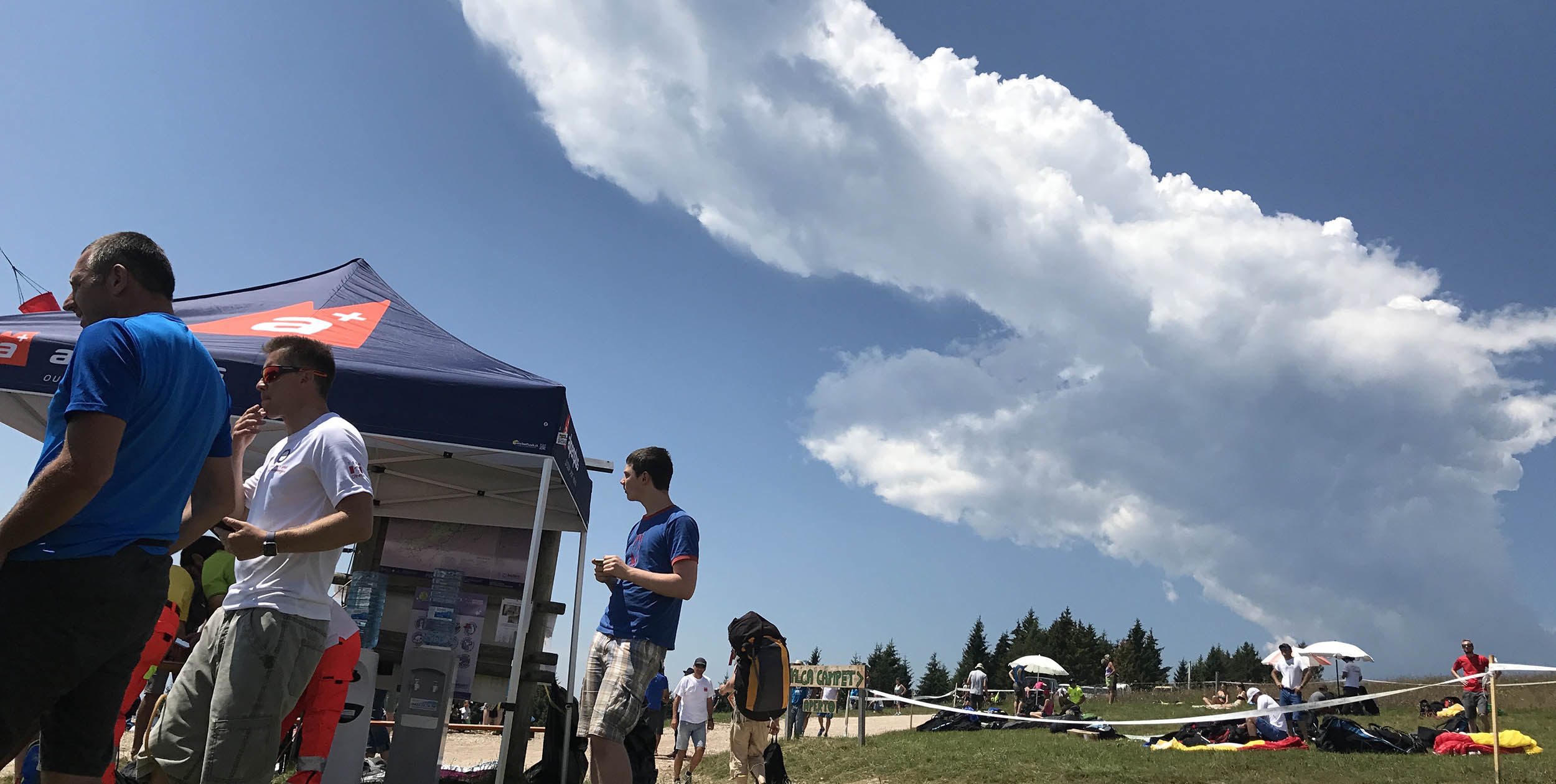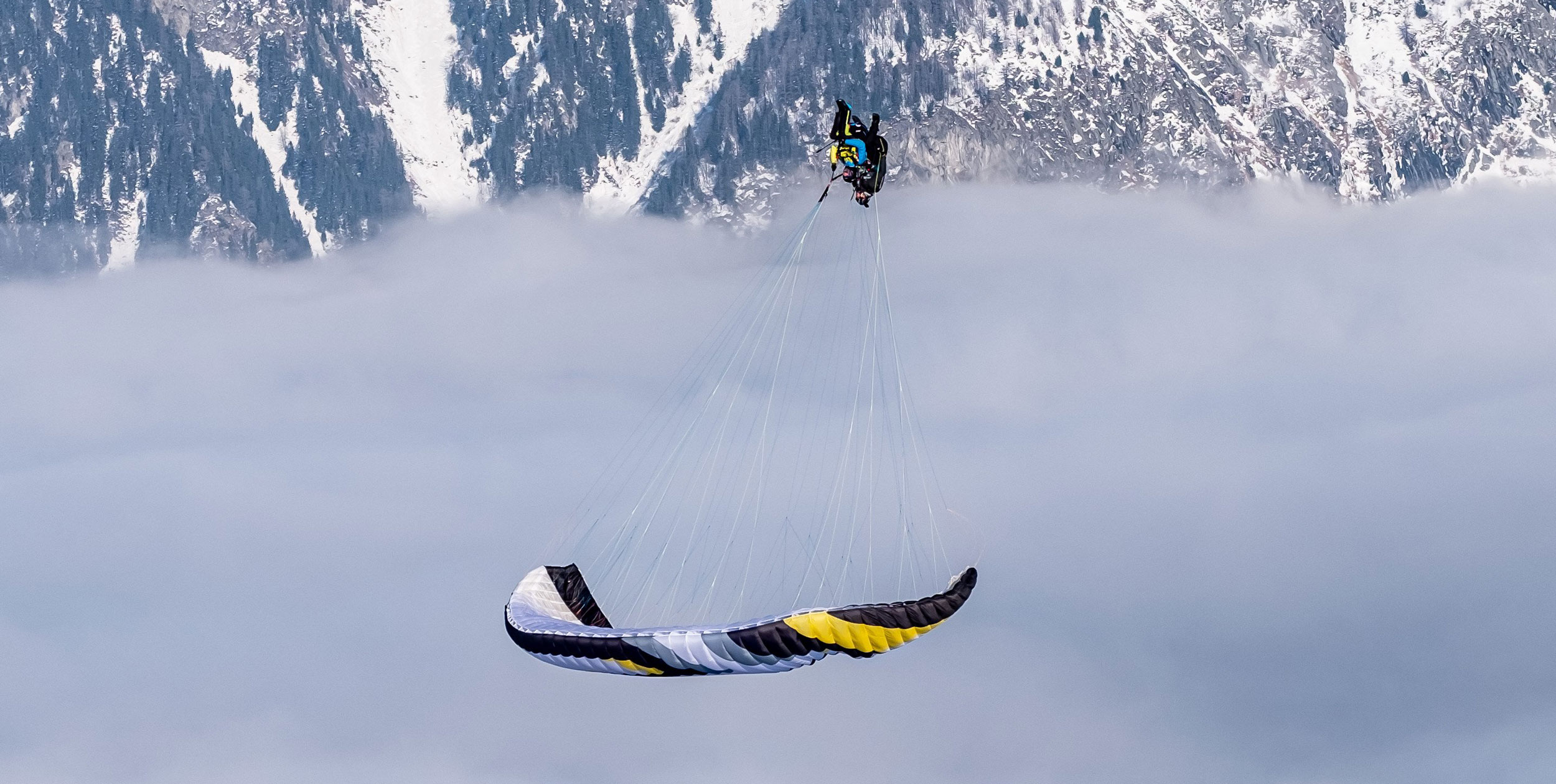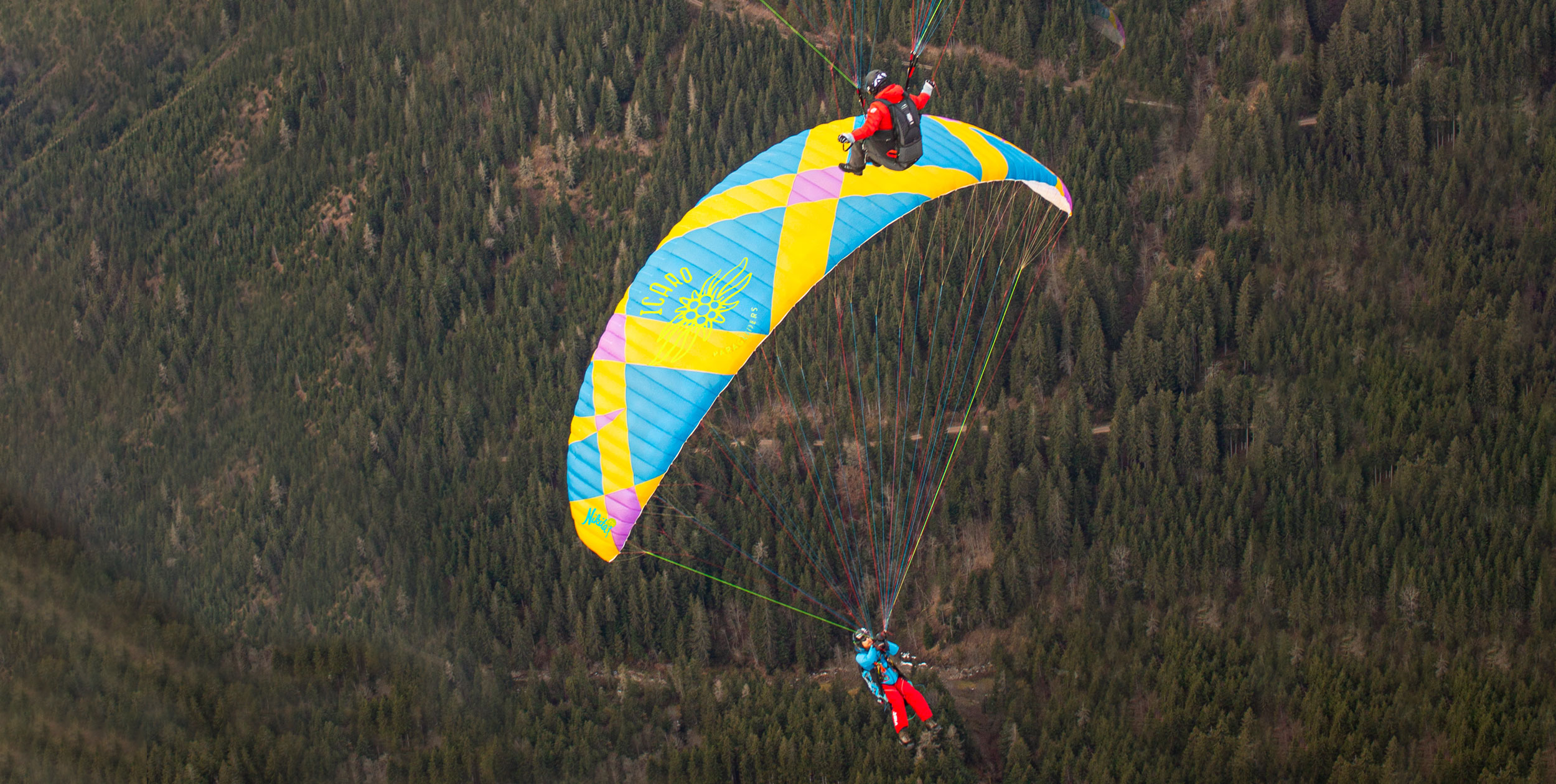A spiral dive on an SIV course above Lake Annecy. From Andersboel’s YouTube channel
The spiral dive is one of the most effective paragliding rapid descent manoeuvres in emergencies. But they can also kill. Bruce Goldsmith takes a look at what’s going wrong
Over the last year there have been several fatal accidents that appear to have been caused directly by spiral dives. Most of the cases involve low-airtime or intermediate pilots flying gliders rated DHV1 or DHV1-2.The pilot, often receiving instruction on the radio or simply trying out spirals on their own, enters a severe spiral, and continues in the spiral all the way to the ground.
With a descent rate of 10-20m/s impact with the ground, and even water is mostly fatal. This year alone I have heard of three such fatalities in France, two in Germany, one in Italy and one over water in Turkey.
All the accidents involved gliders from different brands, the only common thread being the fact that all were intermediate wings certified DHV1 or 1-2.
The problem is not new. I remember hearing about the first fatal accident from a spiral dive in St André Les Alpes about eight years ago. The pilot was also under instruction, and on an XC course with a very experienced instructor. He entered a spiral from which he never recovered.
What is spiral stability?
Certified gliders are tested for spiral stability by the certifying organisation, be it AFNOR or DHV. The test pilot puts the glider into a spiral in a standard way, as defined by the test protocol, and then releases the brakes.
If the glider pulls out of the spiral dive automatically without input from the pilot, then the glider passes the test. If the glider continues in the spiral with the same rate of turn the glider is said to be ’spiral neutral’. If the glider actually accelerates into the spiral once the pilot has released the brakes then the glider is spirally unstable.
Beginner gliders are required to recover immediately, on their own, and advanced gliders are allowed to be spirally unstable as long as it is easily controllable. Intermediate gliders lie somewhere between these two extremes.
All this sounds straightforward enough. So why is it that people are having accidents involving spiral dives on certified wings? To find the answer, we have to look deeper into the background, as what appears to be simple on the surface is actually much more complicated.
Some History
In 1997 a team from the technical department of the DHV, headed by Hannes Weininger, made an in-depth investigation into the spiral stability of gliders. The spiral dive was at the time already considered a problem, particularly on low aspect ratio gliders. The DHV were finding that many gliders were spirally unstable. During testing the DHV were failing nearly all low aspect ratio gliders as a result of their spiral dive characteristics.
In the end the DHV came to the conclusion that practically any low aspect ratio glider would fail if the descent rate was high enough. As a result they decided to fix the descent rate at a level they felt was more reasonable.
They measured the spiral dives made by recreational pilots during SIV courses and found that most spiral dives didn’t go above a 14m/s descent rate. So now the DHV test is based on recovery from a normal spiral with a descent rate of 14 m/s.
The DHV test also says that even if a glider is spirally unstable in spirals of over 14 m/s then the wing must be easy to control in order to achieve a DHV1 or 1-2 grade.
During the course of this investigation the DHV also discovered that there are two types of spiral dives: the ’standard spiral’, and the ’over-the-nose spiral’.
The Standard Spiral
To enter a standard spiral, apply one brake smoothly and progressively. As you do this the bank angle of the glider tends to increase progressively in line with the severity of the spiral. The leading edge is typically at 45 degrees to the horizon, and it is normally difficult to exceed a descent rate of 15m/s.
Over-The-Nose Spiral
This is achieved by doing one 360-degree turn in a standard spiral and then applying one brake abruptly so that the leading edge rotates though 45 degrees and faces towards the ground.
This is very similar to the SAT entry, though when you enter a SAT you apply the brake for longer so that the leading edge goes past the point where it is facing the ground. In an over the nose spiral the speed of descent is very high indeed, normally over 20m/s.
The DHV’s Conclusions
As a result of the investigation, the magazine DHV Info published two articles on the subject – one by Christoph Kirsch (Freex designer) and another by Stefan Muller (Firebird designer) during 1988. Basically both said that the spiral dive was a dangerous manoeuvre and should only be practiced in emergency situations.
They also pointed out that the DHV only tested gliders to a descent rate of 14m/s and that above this descent rate the stability characteristics could be very different.
The DHV recommend that spiral dives should only be taught over water on SIV clinics and not to beginners. They added that spiral dives should only be used as an emergency procedure and, in any case, recommend all pilots exit a spiral at least 300 metres above ground level.
Other Factors Affecting Spiral Stability
All this sounds complicated enough but added to this there are many other important variables that effect spiral stability:
1 Chest strap setting on the harness: The wider you have set your chest strap, the better your glider will recover from spirals. Since intermediate pilots generally fly with a narrower chest strap setting, this could well be one of the contributory factors in some of the fatal accidents.
2 Weight: Gliders are more spirally unstable when the wing is more highly loaded.
3 Cross bracing makes a glider more spirally unstable. This includes ABS, which most pilots use.
4 The speed with which a pilot applies the brakes when entering a spiral.
5 The amount of weight shift applied as a pilot enters a spiral, as well as the amount used once established in
the spiral.
6 The centre of gravity of the pilot. The lower the C of G is, the more likely the glider will be to stay in a spiral. This is very important when considering where to position any ballast.
The certification bodies do their best to test gliders in a standard way that reflects the way pilots fly their gliders in practice. However, with all these variables, it’s easy to see how a certified glider could be found to be spirally unstable under certain circumstances.
Due to the increasing number of accidents involving issues of spiral stability the DHV are making the certification tests more and more severe with regard to spiral stability. Gliders that would have passed DHV1-2 a year ago would now no longer pass at the same rating.
Recommendations
I suspect that intermediate pilots accidentally entering an over-the-nose spiral cause many of the fatal accidents that we are seeing now on intermediate wings.
The speed of descent and the high G-forces surprise them so much that they freeze and do nothing all the way to the ground. This is clearly a very unhealthy situation! Fortunately pilots can avoid this problem by following a few simple guidelines.
1 The spiral dive is an advanced flight manoeuvre and should not be taught to low airtime students.
2 Spirals should be first practised over water on SIV courses before they are done over the ground.
3 To exit from a spiral all you need to do is to weight shift and steer out of the turn. The earlier you exit the spiral the easier it is.
4 In spirals of particularly high descent rate, the brake pressure may become very high and the pilot may be physically unable to apply enough outside brake. In this case first try using both hands on the outside brake. If all else fails, throw your reserve. Many of the pilots that died from spiral dives this year never threw their reserve parachutes. Remember, high G-forces can stop you thinking straight.
• Got news? Send it to us at news@xccontent.local. Fair use applies to this article: if you reproduce it online, please credit correctly and link to xcmag.com or the original article. No reproduction in print. Copyright remains with Cross Country magazine. Thanks
Subscribe to the world’s favourite hang gliding and paragliding magazine







